
Emotional Music Expression | Master Deep Feeling
How to Play Music with More Emotion and Expression
Introduction
Music has the extraordinary ability to stir deep emotions and create unforgettable experiences. However, playing music that truly touches the soul requires more than technical skill; it demands genuine emotional music expression. Whether you’re a beginner or an advanced musician, mastering this art is essential to delivering performances that move audiences.
In this blog, we explore 50 powerful strategies to help you play with greater feeling, passion, and authenticity. From mastering phrasing to embracing vulnerability, each technique is designed to bring out your deepest emotions and channel them through your instrument. By implementing these tips, you will not only improve your musicality but also forge a deeper connection with your listeners.
Our focus keyword “emotional music expression” runs through every part of this guide, ensuring that you understand and apply it effectively. Let’s dive in and learn how you can transform your performances into profound emotional journeys.
Understand the Core of Emotional Music Expression
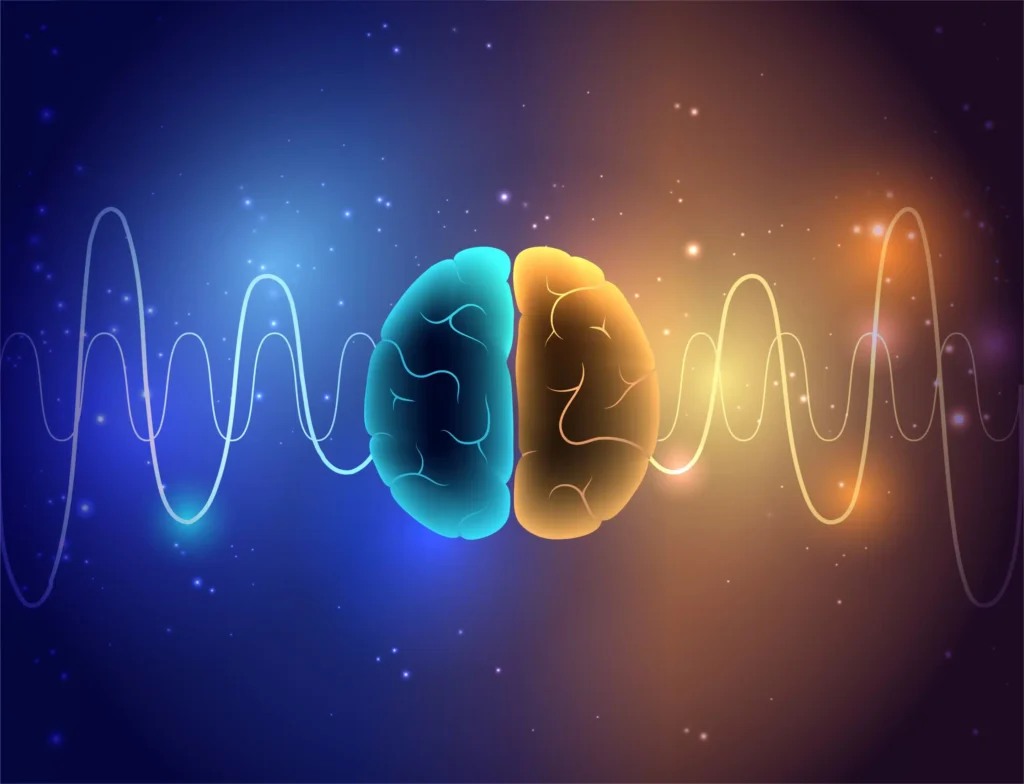
To play music with emotion, you must first understand what emotional music expression actually means. It goes beyond playing notes accurately or performing with technical skill. Instead, it’s about channeling your inner feelings and communicating them to your audience through every note, pause, and dynamic shift. The goal isn’t just to impress; it’s to move people. So, what makes music emotional? It’s a combination of tone, dynamics, phrasing, timing, and most importantly, intention. When you play a piece, ask yourself: what story am I telling? What do I want my listeners to feel?
Additionally, you need to recognize the emotional potential of different musical elements. A soft minor chord played gently can evoke sadness or nostalgia, while a sharp, loud major chord can create a sense of triumph or joy. Even silence can be powerful when used with purpose. Every musical choice you make should serve your emotional goal. This intentionality separates technical playing from expressive artistry.
Moreover, emotional music expression requires vulnerability. You have to be willing to show your true feelings and take emotional risks. This might feel uncomfortable at first, especially in front of an audience. However, the more you practice it, the more natural it becomes. Eventually, expressing your emotions through music will feel as natural as speaking.
In conclusion, emotional music expression starts with a mindset. It’s about viewing music as a language of emotion rather than just a set of technical tasks. Once you make this mental shift, every other skill builds upon it. With time, your playing will not just sound better—it will feel alive, sincere, and unforgettable.
Connect with the Emotions Behind the Music
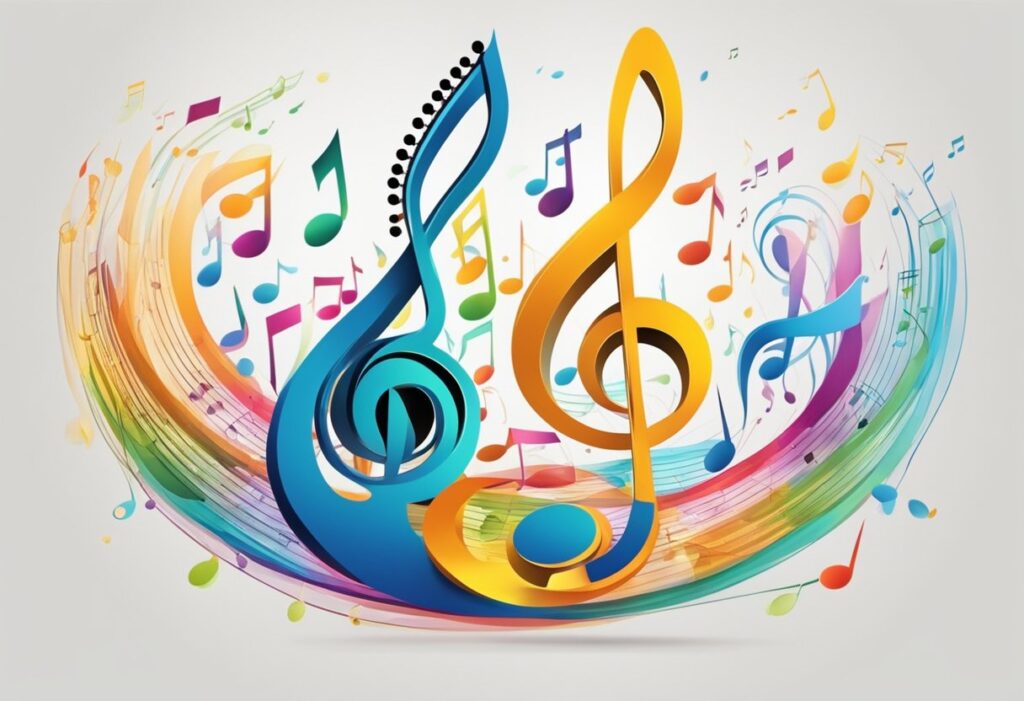
To express music emotionally, it helps to understand the feelings behind the composition. Every piece of music tells a story, and every story carries emotions. When you connect personally with these emotions, your performance becomes more powerful and genuine. Ask yourself: what is the composer trying to say? Is the piece joyful, mournful, tense, or tender? Taking time to study the history, context, or inspiration behind a song allows you to better channel its emotional core.
Try to find personal experiences that relate to the feeling of the piece. If it’s about heartbreak, recall a moment in your life when you felt something similar. Doing this creates a bridge between the music and your soul. That way, your performance becomes a shared emotional experience with your listeners.
Also, use your imagination if a personal memory isn’t available. Visualize a story or a scene that fits the emotion. Imagine walking through a storm for a dramatic piece or dancing through sunlight for a joyful one. This mental imagery helps add emotional music expression to your performance. It brings the notes to life.
Musicians often underestimate the value of emotional memory. Just like actors draw from past experiences, you can infuse music with lived emotions. This not only elevates the sound but touches hearts. Because your expression comes from something real, it resonates more deeply.
So before you play, take a few moments to sit with the music. Feel it. Understand it. Let it move you. Only then can you move others in return.
Master the Use of Dynamics
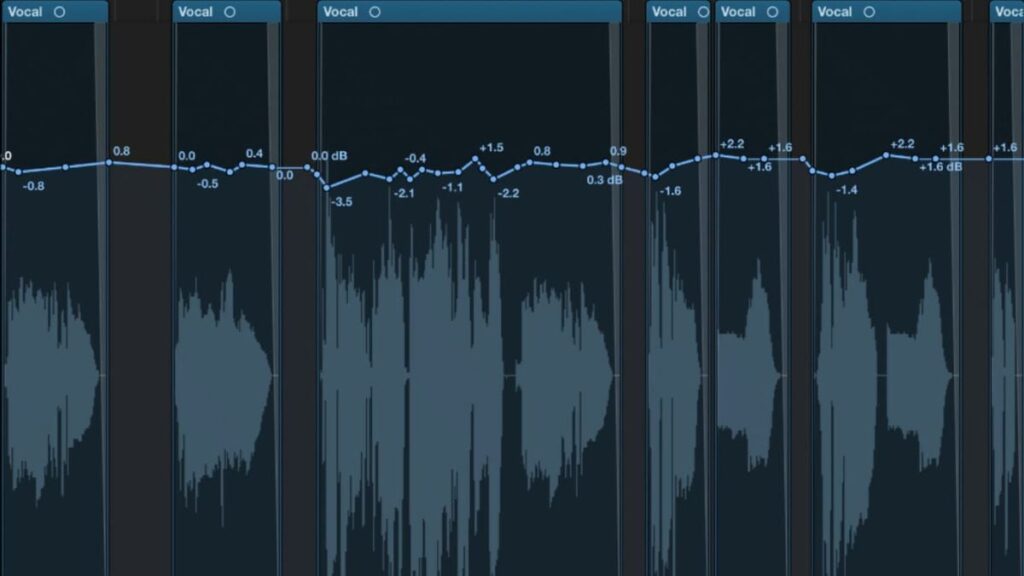
Dynamics are one of the most direct tools for emotional music expression. They involve changes in volume—such as playing loudly (forte) or softly (piano)—to shape the emotional contour of a piece. But it’s not just about being louder or softer. It’s about knowing when and how to apply those changes for maximum effect.
For example, gently fading out at the end of a piece can leave listeners with a sense of peace or reflection. Meanwhile, a sudden, loud outburst in the middle of a quiet section can shock and engage them. These dynamic shifts mirror the ebb and flow of real human emotions. Life isn’t static, and music shouldn’t be either.
Practicing dynamics intentionally can be transformative. Start by identifying the emotional arc of the piece. Where does it rise? Where does it fall? Where does it explode or fade away? Once you map this, your use of volume can guide the listener through that journey. Think of dynamics as your emotional punctuation marks. They give shape and meaning to your musical sentences.
Also, be mindful of transitions. Moving from loud to soft—or soft to loud—should feel natural, not mechanical. Smooth dynamic control builds emotional tension and release. This technique, when mastered, becomes the secret to expressive and memorable performances.
In sum, dynamics aren’t just technical tools. They are emotional signposts. When used skillfully, they invite the audience to feel everything you feel. And that is the heart of emotional music expression.
Develop Your Phrasing Intuitively
Phrasing is like punctuation in language—it helps to clarify meaning and adds emotional shape to a musical line. When you phrase well, your performance sounds like a conversation rather than a series of notes. This is crucial for emotional music expression. A strong phrase communicates intent. It breathes. It has highs, lows, pauses, and emphasis, all of which contribute to the emotional message.
Start by listening to how skilled musicians phrase their lines. You’ll notice they rarely play mechanically. Instead, they stretch or compress time slightly, emphasize key notes, or linger on a phrase to give it weight. Try singing your pieces out loud. Singing naturally adds phrasing. Then, mimic that phrasing on your instrument. This technique helps you internalize the emotional flow of the music.
Think of each phrase as a thought or feeling. Ask: what is the emotion behind this passage? Is it a whisper or a cry? Is it longing, joy, or hope? Then shape your phrase accordingly. Vary your touch, dynamics, and articulation. Avoid playing too evenly, as uniformity can flatten the emotion.
It’s also helpful to use breath as a guide. Imagine where you would naturally breathe if you were singing. That’s often where a musical phrase should end or pause. This makes the performance more human and easier for the audience to follow.
With thoughtful phrasing, your playing becomes more expressive and alive. The audience won’t just hear the music—they’ll feel it, line by line.
Use Tempo to Reflect Feeling
Tempo, or speed, is more than a metronome setting. It’s a powerful tool for emotional music expression. While some tempos are fixed by the composer, many pieces allow room for interpretation. By subtly adjusting tempo—speeding up, slowing down, or using rubato—you can breathe life into your performance.
Rubato, in particular, allows you to stretch or compress timing within a phrase. This technique adds emotion by giving the music a sense of freedom and personality. For instance, lingering on a note can add sadness or tension, while a quickening tempo might build excitement or urgency. These changes mimic how we speak when feeling strong emotions. Our voices shift rhythm and pace naturally—and music can do the same.
Of course, moderation is key. Too much tempo variation can confuse the listener. But used with care, tempo becomes a direct emotional language. It can reflect the performer’s inner state and make the piece more engaging.
Try practicing a piece at different tempos to see what feels right emotionally. Record yourself and listen back. Did the tempo changes highlight the mood? Did they help express what you were feeling? If so, you’re on the right track.
When tempo becomes an emotional tool rather than just a rule, your performance gains depth and authenticity. It moves from mechanical to magical—transforming technique into emotional resonance.
Focus on Tone and Timbre
Tone and timbre refer to the color or quality of the sound you produce. This aspect is central to emotional music expression. Different tones can suggest different emotions. A warm, round tone might feel comforting or nostalgic, while a sharp, edgy tone might express tension or urgency. The subtle differences in tone are what help distinguish a technically good performance from an emotionally moving one.
Start by experimenting with your instrument. On a guitar, for example, playing near the bridge versus near the neck creates very different tones. On a piano, the pressure and speed of your keystroke can alter the sound. On a violin, bow speed and pressure dramatically influence tone. Learn what tonal qualities your instrument is capable of and how to produce them intentionally.
Also, be mindful of the context. What kind of tone does this section of music call for? Should it be delicate or bold? Smooth or textured? By matching your tone to the music’s emotional intent, you create a deeper connection between the sound and the story.
Furthermore, tone is dynamic. It should shift throughout a piece. Don’t settle for one sound. Let the character of the music shape your tonal choices. This adaptability makes your playing feel spontaneous and expressive.
Ultimately, tone and timbre offer endless possibilities for emotional expression. With careful listening and thoughtful control, you can create colors in sound that truly speak to the heart
Study the Lyrics or Storyline (For Vocal and Program Music)
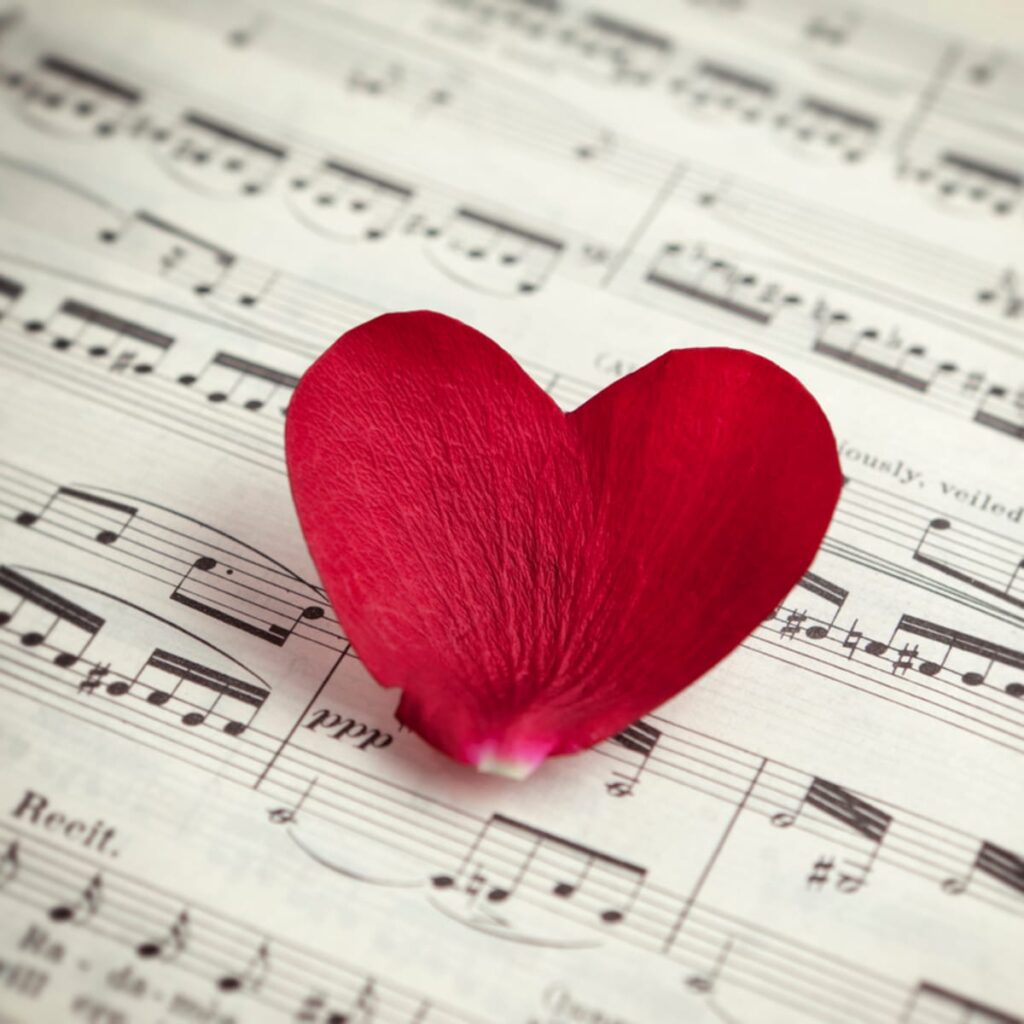
In vocal music or programmatic compositions, lyrics and storylines are invaluable tools for emotional music expression. They offer explicit emotional cues. When you understand the words or narrative, you gain direct insight into the emotion behind each phrase.
Start by reading the lyrics slowly and thoughtfully. What emotions do they express? Are they joyful, sorrowful, romantic, or defiant? Once you grasp the emotional landscape, you can reflect it in your performance. For instance, a lamenting lyric calls for a softer, more introspective delivery, while a triumphant line might demand boldness and strength.
For instrumental program music—where a storyline is implied but not spoken—read the composer’s notes or historical context. Understand the scene being painted. Is the music depicting a storm, a dance, a funeral? This imagery becomes your emotional script.
Additionally, memorize key phrases or images that resonate emotionally. Use them as triggers during performance to summon the right feelings. The deeper your connection with the text or story, the more naturally your emotions will translate into sound.
Practicing in front of a mirror can help too. Observe your facial expressions as you perform. Do they align with the emotion you intend to portray? If not, adjust until they do. Expression is both internal and external.
In short, lyrics and storylines are emotional anchors. They guide your interpretation, helping you deliver performances that feel sincere and vivid.
Engage in Active Listening to Emotional Performers
Active listening to emotionally expressive performers is a powerful way to deepen your emotional music expression. It’s not enough to just hear music—you must listen with intent. Pay attention to the phrasing, tone, dynamics, and tempo choices. These elements reveal how the performer conveys emotion.
Start with recordings by renowned emotional interpreters. Vocalists like Maria Callas or instrumentalists like Yo-Yo Ma excel in expressive delivery. As you listen, ask yourself: what am I feeling right now? Which part of the performance triggered that feeling?
Rewind and isolate those moments. Analyze them. Was it a subtle crescendo, a shift in tone, or a pause? Try replicating these techniques in your own practice. Over time, you’ll develop a toolkit of expressive strategies.
Furthermore, watch live performances or videos. Observe body language and facial expression. These visual cues often reinforce the emotional content of the music. Mimicking expressive gestures can help translate internal emotion into external performance.
Taking notes during listening sessions is also helpful. Create a journal of emotional techniques used by different artists. Compare interpretations of the same piece. This teaches you that emotional expression is personal and versatile.
Ultimately, active listening is like mentorship. It teaches you what’s possible in emotional music expression. It broadens your perspective and fuels your own expressive growth.
Use Body Language to Enhance Emotional Delivery
Your body speaks just as much as your instrument does. Facial expressions, posture, and movement all contribute to emotional music expression. When your body aligns with your emotions, your performance becomes more compelling and believable.
Begin by being aware of your posture. Are you tense or relaxed? Tension can block emotional flow. Relaxed, open posture supports both breath and expression. For singers and wind players, this is especially critical, but instrumentalists benefit too.
Facial expressions are also powerful. They communicate emotion instantly. A furrowed brow, closed eyes, or gentle smile can subtly amplify the feeling of the piece. These expressions shouldn’t be forced. Instead, let them arise naturally as you internalize the music.
Movement can also enhance expression. A slight sway, a lifted hand, or even just shifting your weight can mirror the emotion in the music. These gestures should support, not distract. Aim for natural, expressive movement that grows organically from the emotional content.
Record your performance on video and watch it critically. Does your body convey the music’s message? If there’s a mismatch between sound and appearance, adjust. Authentic body language enhances your musical message and engages your audience more fully.
Remember, emotional expression is holistic. It involves every part of you. When your body, face, and sound align, the result is a performance that truly resonates.
Build Emotional Vocabulary Through Repertoire
A key component of emotional music expression lies in the variety of music you play. The broader your repertoire, the more emotional language you acquire. Each musical genre, composer, and era introduces new textures, feelings, and nuances. This exposure expands your expressive palette, making you a more versatile and emotionally articulate performer.
Begin by exploring pieces that embody different emotions. Try a sorrowful Chopin nocturne, a fiery flamenco guitar piece, or a tender jazz ballad. As you play these works, focus on what each one is trying to say emotionally. Identify what techniques are being used—like tempo shifts, dynamics, phrasing, and articulation—to express those emotions. You’ll start to recognize patterns and tools that can be applied to your own performances.
Importantly, choose pieces that resonate with your own experiences. This connection will make it easier to inject genuine emotion into your playing. Reflect on why a piece moves you and how you can make that emotion accessible to your listeners. You can also keep a musical journal, noting how each piece makes you feel and what expression techniques you use. Over time, this becomes your personal emotional music expression dictionary.
Additionally, try to play the same piece in different emotional ways. What happens when you play it with sadness, joy, or suspense? This exercise helps you understand emotional contrast and flexibility.
Key Points:
Expand repertoire for wider emotional vocabulary.
Choose emotionally resonant pieces.
Practice expressing the same piece in multiple emotional tones.
Analyze Emotion in Music Theory
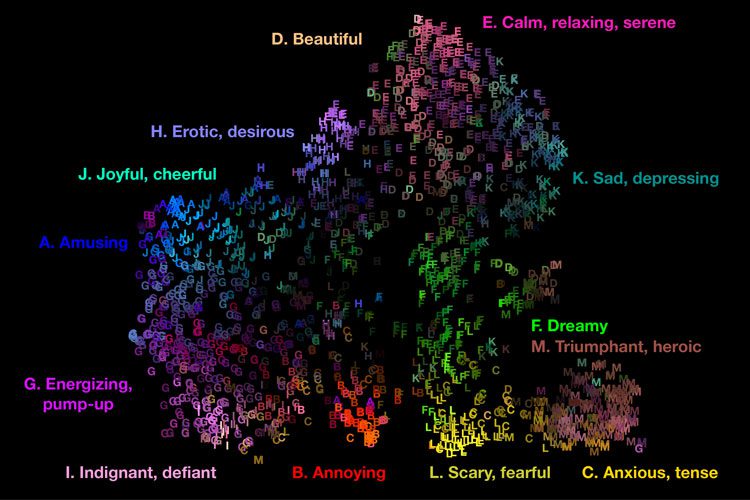
To achieve emotional music expression, understanding the theory behind music is incredibly beneficial. Music theory isn’t just academic—it’s emotional architecture. It shows you how chords, scales, intervals, and progressions can evoke specific feelings. With this knowledge, you can perform with more intention and shape emotional outcomes more precisely.
For instance, minor scales often sound sad or introspective, while major scales tend to sound happy or triumphant. Dissonant intervals can introduce tension, and resolutions bring relief. Understanding these emotional associations gives you the power to lean into them during performance. It allows you to predict how a listener might feel and guide them through an emotional journey.
Harmony plays a particularly important role. Try analyzing a piece you’re learning: what kind of chords does it use? What progressions appear, and how do they support the mood? This intellectual layer adds depth to your emotional interpretation. It’s like knowing the grammar behind the language of feelings.
Additionally, form and structure also influence expression. A return to the main theme might evoke familiarity or closure. A sudden modulation may suggest surprise or transformation. Understanding these formal cues helps you emphasize them in your playing.
When theory becomes part of your expressive toolkit, you gain confidence. You’re no longer guessing what to feel—you’re engaging with the music on a deeper level.
Key Points:
Learn how theory links to emotional impact.
Analyze harmony, scale, and structure.
Use theory as a guide for emotional phrasing.
Use Silence to Speak Volumes
In emotional music expression, silence is just as powerful as sound. Strategic pauses or rests allow music—and emotions—to breathe. They create anticipation, reflection, or intensity, depending on how they’re used. Understanding the emotional weight of silence transforms your playing from continuous sound to meaningful storytelling.
Silence acts like a comma or period in a sentence. It lets a musical idea settle, invites the listener to reflect, and prepares the ear for what’s next. Without silence, even the most passionate music can feel overwhelming or cluttered. With it, your expression gains depth and pacing.
For example, consider a dramatic pause right before a climax. That moment of stillness heightens the emotional impact of what follows. Or a breath after a tender phrase allows the listener to feel its beauty. These pauses become part of the musical conversation, drawing the listener in.
To use silence effectively, you must be intentional. Don’t rush through rests or downplay their value. Treat them as expressive tools equal to any note or dynamic. Practice playing with exaggerated pauses and observe the emotional shift they create. Listen to performances by expressive artists and note how they use silence.
Key Points:
Treat silence as part of emotional language.
Use pauses to create anticipation or closure.
Practice with intentional rests for stronger impact.
Google image term: “musician using silence emotional moment”
Embody the Character of the Music
To deepen your emotional music expression, it’s important to embody the character of the piece you are performing. This means going beyond simply playing the notes accurately. Instead, immerse yourself in the personality, mood, and story of the music.
When you approach a piece, ask yourself what kind of person the music would be if it came alive. Is it noble and dignified, or playful and mischievous? Is it mourning or celebrating? By imagining these qualities, you can begin to interpret phrasing, articulation, and dynamics with greater emotional alignment.
Take time to explore the background of the composer or era. For instance, Baroque music often requires elegance and control, while Romantic works allow for more personal and dramatic flair. Use this knowledge to guide how you physically and emotionally approach the music.
Even your posture, gestures, and breathing can be adjusted to match the character. Your body language informs your brain and emotions, helping you truly embody the music’s spirit. Audiences respond to this authenticity.
Lastly, remember that musical character can evolve within the same piece. Transition smoothly between different moods and energy levels, guiding the listener through a compelling emotional arc.
Key Points:
Identify and interpret the personality of the music.
Align physical expression with musical character.
Let the character evolve during the performance.
Practice Mindful Listening
Mindful listening is crucial for refining emotional music expression. It involves giving your full attention to the sound, feeling every nuance of tone, phrasing, and timing. Through careful listening, you gain deeper insight into both your playing and that of others.
Start by listening to masterful performances across different genres. Pay attention to how professionals use dynamics, tempo, articulation, and silence to convey emotion. As you listen, ask: What emotions am I feeling? How is the performer achieving that effect? What would I do differently?
When practicing your own music, record yourself often. Listen back mindfully, noting not just technical accuracy but emotional quality. Are your intentions coming through clearly? Are there moments that feel flat or overly forced? Use this feedback to guide expressive improvements.
In addition, mindful listening allows you to be present during performances. Rather than playing mechanically, you respond in real time to your own sound and the emotional energy in the room. This creates a connection that listeners can feel.
Remember, mindful listening is a practice. The more you do it, the more sensitive and expressive you become as a musician.
Key Points:
Listen actively to your own and others’ performances.
Focus on emotional delivery, not just technique.
Use mindful feedback to refine expression.
Connect Through Eye Contact and Energy
When performing live, emotional music expression isn’t limited to sound alone. Your presence, body language, and eye contact all contribute to the audience’s emotional experience. While it may seem subtle, how you engage visually and energetically can elevate the emotional depth of your performance.
Making eye contact, especially during moments of pause or intensity, forges a direct emotional connection. It communicates vulnerability, confidence, or passion. This nonverbal communication makes the music feel personal and alive.
Energy is another key factor. Whether you’re still or animated, your energy must match the emotion of the piece. A slow, melancholic song demands quiet focus, while an upbeat piece thrives on vibrant motion. Balance authenticity with control so your movements support the music rather than distract from it.
Also, be aware of your audience’s reactions. Feeding off their energy and giving it back amplifies the emotional atmosphere. In essence, you and your listeners become part of the same emotional story.
Key Points:
Use eye contact to connect emotionally.
Align body language and energy with the music.
Engage with audience feedback for dynamic expression.
Study Acting and Emotional Recall Techniques
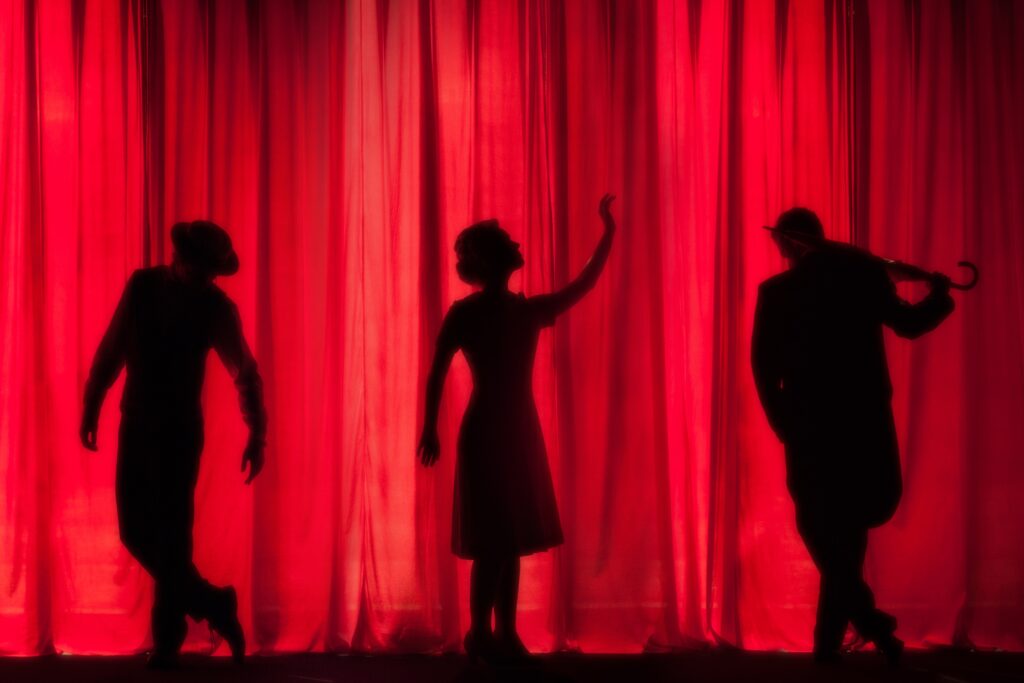
To enhance emotional music expression, consider borrowing techniques from acting. Actors train extensively in emotional recall, physicality, and expression—all of which can enrich your musical performance.
One effective technique is emotional memory. Think about a personal experience that relates to the feeling you want to convey. Use that memory to generate genuine emotion as you play. This helps move beyond imitation into real expression that resonates deeply.
Another useful method is mirroring. Stand in front of a mirror while performing and observe your facial expressions and gestures. Are they in sync with the music’s mood? This exercise increases self-awareness and ensures that your body is communicating as effectively as your instrument.
Additionally, practice role-playing. Pretend you are a character living out the narrative of the music. This perspective helps tap into emotions you may not typically express, making your performance more dynamic and compelling.
While music and acting are distinct, they share emotional goals. By integrating these practices, you bring your music closer to storytelling and theatrical impact.
Key Points:
Use emotional recall to generate real feeling.
Mirror expressions to align physically with emotion.
Study acting to build expressive versatility.
Adapt to the Emotional Landscape of Each Performance
Each performance space, audience, and moment carries its own emotional tone. To master emotional music expression, it’s essential to adapt your playing to the specific atmosphere you’re stepping into. This awareness allows your music to feel alive, timely, and resonant with those experiencing it.
Before performing, take a moment to sense the room. Is it an intimate setting that calls for subtlety, or a grand hall that invites drama? Even the mood of the audience can influence your interpretive choices. When you align your emotional delivery with the surrounding environment, your music becomes a mirror reflecting the present moment.
This doesn’t mean changing your piece entirely, but rather inflecting your dynamics, phrasing, or timing to suit the context. If the space feels tense or somber, you might lean into the more reflective aspects of your piece. If it’s celebratory, emphasize the joy and exuberance.
Adapting in real time builds emotional flexibility. It also strengthens your connection with the audience—they feel seen and heard through your responsiveness. Additionally, performing the same piece in various venues over time gives you valuable insight into how environment shapes expression.
Practice this by recording yourself in different settings, noticing how your emotional delivery shifts. This deepens your interpretive toolkit and brings nuance to your performances.
Express Emotion Through Physical Movement
Your body is an extension of your instrument. Incorporating intentional physical movement into your playing enhances emotional music expression and adds visual clarity to your message. It allows you to embody the emotion, making it more tangible for both yourself and your audience.
Movements don’t need to be theatrical—they just need to be connected to the feeling you’re conveying. A slight sway can suggest tenderness, while a strong posture can project confidence or power. These physical cues help the audience feel your emotional intent, even before a note is played.
For pianists, arm weight and hand motion can affect how expressive a note sounds. For string players, bowing gestures become emotional extensions. For singers, facial expression and breath convey deep meaning. These movements align the visual and auditory elements of a performance, creating a unified emotional impact.
In practice, film yourself performing and observe how your movements support or distract from your emotional goals. Adjust your gestures to amplify clarity and authenticity. Don’t force it—movement should evolve naturally from your emotional intent.
This embodiment not only enhances connection with the audience but also roots you more deeply in the present moment. When emotion flows through your whole being, your performance transcends notes and becomes a complete sensory experience.
Let Lyrics or Storylines Guide Expression
For vocalists and instrumentalists interpreting lyrical works, the text offers a direct path to emotional music expression. Understanding the story or theme behind a piece provides emotional anchors, helping you navigate shifts in tone, tension, and release.
Even instrumental music often carries a narrative or mood progression. Knowing this arc allows you to shape your phrasing, articulation, and dynamics with greater intention. For example, a romantic poem set to music will guide you toward softness, longing, or vulnerability, while a dramatic narrative might call for bold contrasts and heightened expression.
If you’re working with lyrics, study the meaning of each line. Translate that meaning into tone and texture. How does the mood change from stanza to stanza? How can your vocal tone or instrumental color follow suit? Internalizing these transitions lets you create a performance that breathes with emotional depth.
For purely instrumental works, create your own internal storyline. Assign emotional roles to sections: conflict, hope, despair, joy. This narrative frame turns abstract sound into a journey.
Listeners are more likely to feel connected when there’s a clear emotional trajectory. Understanding the story ensures your interpretation is not just technically precise but emotionally coherent and impactful.
Practice Slow to Unlock Deep Emotion
Speed often hides emotional potential. Slowing down your practice allows you to uncover subtleties in phrasing, tone, and emotion. When you take time to explore each note and transition with care, your emotional music expression becomes more deliberate and nuanced.
Many musicians rush through practice, focused on technical perfection. But emotion lives in the in-between—the space where one phrase breathes into another, where a vibrato blooms, where a pause lingers. Slow practice exposes these hidden layers and helps you connect more deeply with the music’s emotional essence.
Start by selecting a passage that feels emotionally rich. Play it at half-speed, listening intently to each sound. Ask yourself: what does this phrase feel like? Where is the tension? When does it release? Adjust your touch, timing, and breath accordingly. As you slow down, you’ll begin to uncover micro-expressions that enhance the piece’s emotional power.
Slow practice also builds muscle memory for expressive gestures, allowing them to become second nature at performance tempo. Over time, your control improves, and your emotional intent becomes clearer.
By taking time to slow down, you’re not just practicing notes—you’re practicing feeling. The result is a performance that communicates with emotional richness and resonance.
Refine Articulation for Emotional Clarity
Articulation—the way notes are started and ended—is fundamental to emotional music expression. The difference between a staccato note and a legato phrase can drastically change the mood of a passage. By refining your articulation techniques, you gain control over how your emotions are perceived by your listeners.
Each style of articulation carries emotional weight. Staccato can convey urgency, playfulness, or agitation, while legato might suggest serenity, longing, or introspection. Accents can imply boldness or emphasis. These choices function like punctuation in language, guiding the emotional rhythm of your performance.
Experiment with various articulations while practicing the same musical phrase. Observe how each change affects the emotional tone. By doing so, you’ll develop a sensitive ear and a flexible expressive toolkit. It’s equally important to listen to professional recordings and analyze how great artists use articulation to bring music to life.
In ensemble settings, articulation also supports unity and contrast. Matching articulation with fellow musicians enhances collective expression, while contrasting articulation creates emotional tension. Solo performers, too, can use these shifts to distinguish sections and emotional layers within a piece.
Don’t overlook articulation markings in the score—they offer direct insight into the composer’s expressive intent. However, don’t be afraid to interpret them through your own emotional lens. The ultimate goal is to communicate feeling clearly and authentically.
Shape Musical Phrases with Breath and Flow
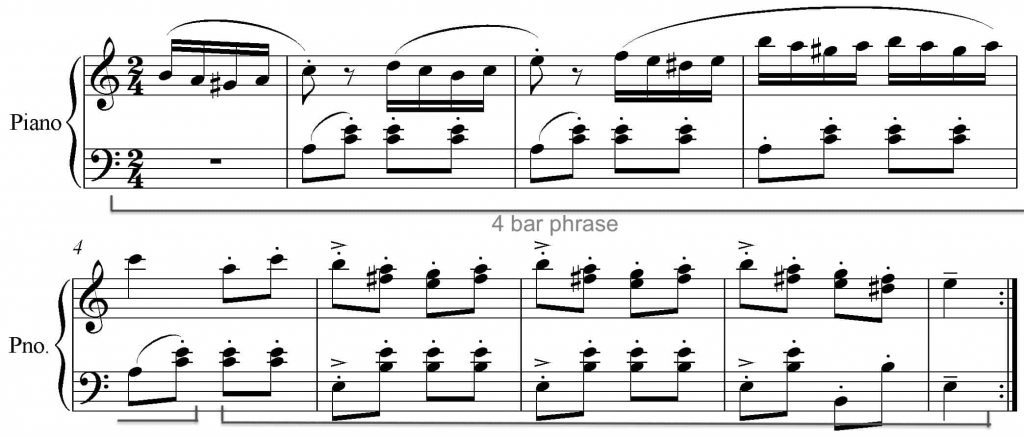
Musical phrasing mirrors natural speech—it breathes, flows, and pauses. Understanding this connection enhances emotional music expression by making your playing sound organic and human. Shaping phrases thoughtfully helps communicate emotional arcs and engages listeners on a deeper level.
Imagine you’re reading a poem aloud. You wouldn’t speak in monotone or without pausing; you’d emphasize important words and shift your tone. Similarly, in music, phrasing helps highlight climaxes, tensions, and resolutions. Even instrumentalists benefit from thinking about breath—phrases need to “inhale” and “exhale.”
Practice isolating phrases within your pieces. Identify where they begin and end. Then, shape them with slight dynamic swells, rubato, and tonal shifts to emphasize emotional intention. Avoid playing each note with equal weight; instead, let each phrase tell a story.
Pay attention to the contour of each phrase. Ascending lines might suggest rising hope or excitement, while descending lines can evoke calmness or sadness. Articulation and tempo changes also help you sculpt phrases expressively.
Recording your practice sessions and listening back is a powerful tool. You’ll hear whether your phrasing feels natural or mechanical. With reflection and adjustment, your musical flow becomes more expressive and less rigid.
When music breathes, it feels alive. Phrasing gives your performance the nuance and depth that captures hearts and tells stories beyond the notes.
Explore Emotional Improvisation
Improvisation offers a direct path to emotional music expression. When you improvise, you’re composing in real-time, drawing from your current mood, experience, and musical instincts. This spontaneity often leads to some of the most personal and emotionally rich music.
Start by choosing a scale or chord progression and allowing yourself to play without overthinking. Let your fingers, breath, or bow respond to how you feel in the moment. This kind of emotional freedom sharpens your intuition and helps you express subtle or complex feelings that written music might not convey.
Improvising regularly also builds confidence in emotional storytelling. You begin to trust your instincts and develop a vocabulary of gestures and motifs that align with specific emotions. Even mistakes become part of the expression—they reflect vulnerability, surprise, or exploration.
Try recording your improvisations and journaling about the emotions you aimed to express. What worked? What felt honest? Over time, you’ll discover patterns in your playing that reflect your emotional style.
Improvisation is not limited to jazz. Classical, folk, rock, and other genres all offer space for spontaneous creation. Use this practice to unlock emotional insights you can later bring to structured compositions as well.
When improvisation is emotionally driven, it becomes a form of pure communication. You’re not just playing music—you’re revealing your inner world.
Translate Lyrics into Instrumental Emotion
If you play instrumental music, studying lyrics—even when not singing—can deepen your emotional music expression. Lyrics are built around storytelling, emotion, and phrasing, all of which can inform how you interpret a piece.
Take a song you know well and read its lyrics slowly. What emotions do the words evoke? How does the structure mirror a personal experience? Now, imagine how you might convey those feelings without words. This exercise bridges the gap between lyrical intention and musical execution.
For instance, if a line in a song speaks of heartbreak, your phrasing might slow and soften. If a verse is joyful, your tone may brighten. Try shaping your performance based on the emotional shifts in the lyrics. This alignment helps instrumentalists tap into storytelling even without voice.
Studying vocalists is another way to learn emotional nuance. Observe how they phrase lines, use vibrato, and breathe. Translate those techniques to your instrument—whether that means bowing like a breath, playing phrases like sentences, or using articulation to emphasize emotional words.
This method transforms performance into narrative. When you embody the story of a song through your instrument, the audience connects more easily—even if no words are spoken.
Perform for Feedback and Reflection
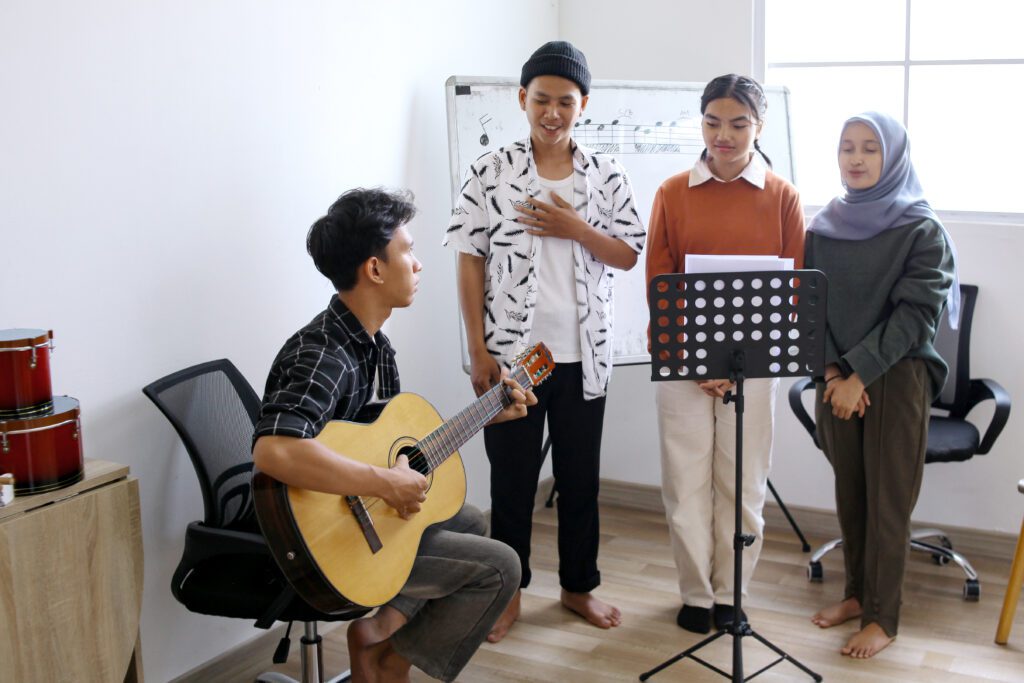
Feedback is essential for refining emotional music expression. While personal emotion is central, how your performance resonates with others matters too. Performing for an audience—whether peers, mentors, or strangers—offers insights you can’t get in isolation.
After a performance, ask your listeners what they felt. Were your emotional intentions clear? Which moments moved them most? These responses can affirm your choices or highlight areas needing more depth or clarity. Constructive feedback helps you bridge the gap between intention and impact.
Record your performances and reflect on them critically. Listen not just for accuracy but for expression. Did your dynamics, tone, and phrasing match the mood you aimed for? Over time, this habit strengthens your emotional intelligence as a musician.
Try performing the same piece in multiple emotional styles and gather feedback on each version. This experimentation reveals how your interpretive choices affect perception. It also expands your expressive range and builds adaptability.
Feedback isn’t about approval—it’s about connection. It encourages growth and helps you become not just a better musician, but a better emotional communicator. Every time you perform and reflect, you get closer to truly expressive artistry.
Cultivate Emotional Memory for Performance Depth
Tapping into emotional memory can deepen your musical expression significantly. This technique involves recalling personal experiences and emotions to fuel your interpretation of music. Just as actors use emotional recall to enhance their performances, musicians too can draw upon their emotional past to add sincerity and depth to their playing.
When preparing a piece, think about moments in your life that align with the emotional tone of the music. Is the melody nostalgic, sorrowful, triumphant, or tender? Reflect on memories that spark similar feelings and let them influence your dynamics, tempo choices, and phrasing.
This process doesn’t mean dramatizing or exaggerating your playing. Instead, it allows you to connect more genuinely with the music’s emotional content. Your audience will sense this connection, as authentic emotion resonates more strongly than surface-level performance.
Practice performing sections of your music while visualizing these memories. Notice how your tone and interpretation shift. This method helps you maintain emotional consistency throughout the performance, especially during challenging passages.
By integrating emotional memory into your practice routine, your performances become not only technically sound but emotionally impactful. You turn each piece into a meaningful personal narrative, allowing listeners to share in your journey.
Use Dynamics to Amplify Emotional Music Expression
Dynamics—the variations in loudness and softness—play a powerful role in emotional music expression. They create contrast, highlight tension and release, and give your performance shape and direction. Without thoughtful dynamic choices, even technically accurate playing can feel flat.
Consider dynamics as your emotional volume dial. A whisper-soft passage can evoke intimacy or vulnerability, while a sudden forte may convey shock or exultation. The key lies in contrast and control. Don’t just follow dynamic markings mechanically—interpret them with emotional intent.
In practice, exaggerate dynamic shifts to explore their effect. Ask yourself: what does this crescendo feel like? What story does this decrescendo tell? Let emotional intention guide your dynamic range.
Equally important is the use of subtle dynamic shaping within phrases. Not every change needs to be dramatic. Small swells and fades within a single line add nuance and life. These micro-dynamics mimic speech patterns, enhancing relatability.
Dynamics also help maintain listener interest. Variations in volume prevent monotony and keep the emotional arc moving forward. When aligned with the narrative of the piece, dynamics elevate your performance from mere notes to powerful storytelling.
Mastering dynamics takes time, but the emotional payoff is immense. It transforms your music into a vivid, engaging experience.
Master Vibrato for Expressive Nuance

Vibrato is more than a technique—it’s an emotional tool that can add warmth, intensity, and color to your sound. When used thoughtfully, vibrato enhances emotional music expression by adding a human-like quality to your tone, mimicking the subtle inflections of the voice.
Begin by exploring how different speeds and widths of vibrato affect the mood of a note. A slow, wide vibrato might evoke sorrow or longing, while a fast, narrow vibrato can add urgency or brilliance. Use these variations purposefully to match the emotional context of the music.
Practice applying vibrato selectively rather than uniformly. Not every note needs it. Focus on highlighting emotionally significant moments—sustained notes, phrase endings, or melodic peaks. This selective usage makes vibrato more impactful and less predictable.
Also, observe great performers and study how they use vibrato expressively. Try to emulate their phrasing and emotional intent while developing your unique vibrato style. Record yourself and listen critically to how your vibrato contributes to—or distracts from—the emotional message.
When mastered, vibrato becomes an extension of your voice. It adds shimmer, depth, and emotional contour to your playing, making each note resonate not just audibly but emotionally.
Sync Body Language with Musical Emotion
Your body is part of your instrument. The way you move while performing significantly influences emotional music expression. Subtle gestures, posture, and facial expressions can all amplify the emotional impact of your performance.
Start by observing your natural movements during practice. Are they stiff or flowing? Do they align with the emotional content of the piece? Often, musicians unconsciously restrict their movement, limiting expression. By consciously allowing your body to move with the music, you enhance both sound production and emotional delivery.
For instance, leaning into a phrase can convey intimacy, while a broad arm gesture during a powerful passage adds grandeur. Movements don’t need to be theatrical; they should feel natural and supportive of the music. Consistency between movement and sound creates a more compelling, emotionally unified performance.
Mirror practice or video recordings can help you evaluate your body language. You’ll gain awareness of habits and discover how physical expression enhances musical storytelling. Additionally, relaxed and expressive movement often improves tone quality and reduces tension.
Your physical presence tells a visual story alongside the music. When aligned with your emotional intent, it draws listeners in and strengthens your connection with the audience.
Embrace Silence as an Expressive Element
Silence in music is as powerful as sound. It creates space for reflection, anticipation, and emotional resonance. Mastering the use of silence—rests, pauses, and moments of stillness—enhances emotional music expression by adding depth and drama to your performance.
Think of silence as musical punctuation. Just as a pause in speech can add meaning or tension, a well-placed rest can heighten the emotional impact of a phrase. Silence gives your audience time to absorb what they’ve heard and anticipate what’s to come.
Use silence to emphasize emotional shifts. A brief pause before a new section can signal a change in mood or intention. Holding a rest slightly longer than written (with taste) can underline a sense of longing, suspense, or awe.
Practicing with deliberate attention to silence helps you develop pacing and emotional timing. Don’t rush through rests—respect them as expressive moments. Also, be aware of the acoustics in your performance space. Let the reverberation fill the silence, extending the emotional aura.
Silence can also reflect vulnerability or courage. In a world filled with noise, a moment of stillness stands out. When used wisely, silence becomes a powerful ally in conveying emotional truth.
Develop Sensitivity to Musical Textures
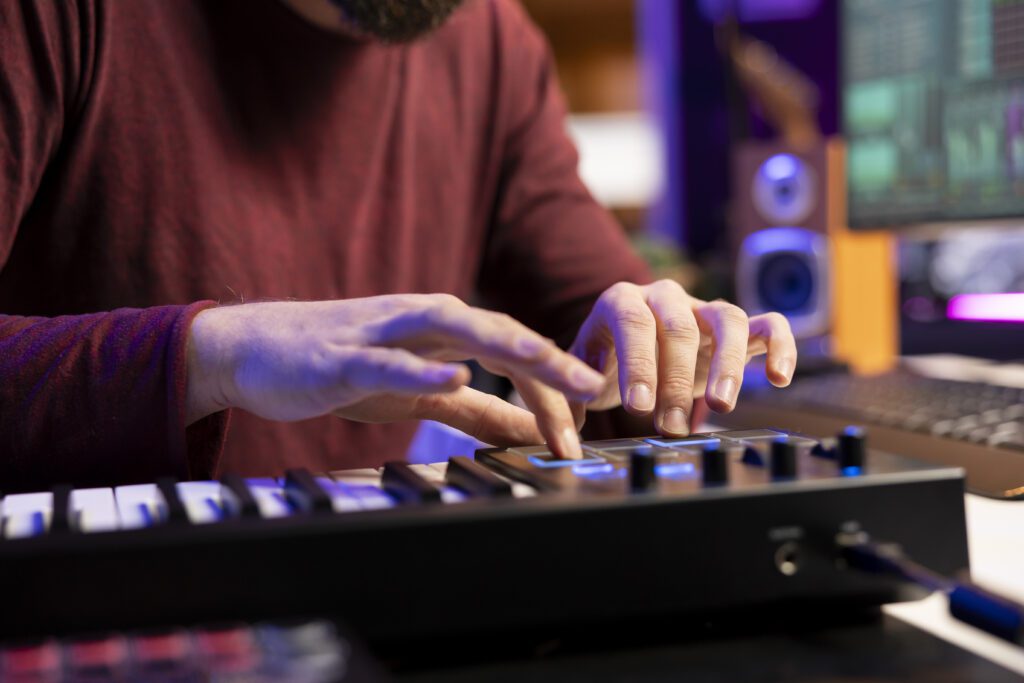
Understanding and responding to different musical textures is vital for emotional music expression. Texture refers to how layers of sound within a piece interact. Whether it’s a solo melody, rich harmonies, or intricate counterpoint, each texture requires a tailored emotional approach.
When encountering thin textures, such as a single melodic line, focus on clarity and nuance. Every note carries weight and meaning, demanding careful attention to dynamics and phrasing. Conversely, thick textures, like a full orchestra, offer opportunities to blend into the collective emotion while highlighting moments of individual expression.
Key Points:
- Identify the texture before playing.
- Adjust dynamics and articulation to match the texture.
- Blend or stand out as needed.
By aligning your emotional delivery with the texture, you create a cohesive and compelling performance. Remember, the audience often feels the texture even more than they hear it, making your sensitivity crucial.
Interpret Lyrics for Vocal Emotional Music Expression
For singers, lyrics are a direct conduit to emotional music expression. However, simply singing words isn’t enough; you must internalize and embody them. Understanding the meaning, context, and emotional weight behind lyrics transforms your performance from mechanical to magnetic.
Start by analyzing the lyrics deeply. Ask yourself what the songwriter intended, but also what the words personally mean to you. Bring these insights into your phrasing, tone, and delivery.
Key Points:
- Study the lyrics’ literal and emotional meaning.
- Match vocal tone and dynamics to lyrical content.
- Convey the story behind the words.
Ultimately, audiences connect most with performances that sound like a conversation, not a recitation. Let every word carry the emotions it deserves.
Explore Cultural Context for Deeper Expression
Understanding the cultural background of a piece enriches emotional music expression. Different traditions, eras, and societies imbue music with distinct emotional codes. Recognizing and respecting these layers allows you to perform with authenticity.
Research the history of the composer, the time period, and the style conventions. How did people experience emotions then? What musical gestures meant sadness, joy, or defiance?
Key Points:
- Research the cultural and historical background.
- Integrate stylistic nuances into your interpretation.
- Respect traditional expressions while adding personal emotion.
When you perform with cultural insight, you honor the music’s origin while deepening your connection to it.
Refine Your Breath Control for Emotional Flow
Breath control is crucial not only for singers and wind players but for phrasing and emotional continuity across all instruments. Good breath management allows natural ebb and flow, mirroring the human voice and making emotional music expression seamless.
Even if you play a non-wind instrument, imagine “breathing” through your phrases. Shape your lines with rises and falls, inserting metaphorical breaths where natural pauses occur.
Key Points:
- Practice breath control exercises regularly.
- Shape musical phrases like sentences.
- Use breath to support emotional pacing.
Breath links technical skill with emotional delivery, offering your listeners an experience that feels organic and alive.
Harness the Power of Repetition and Variation
Repetition and variation are fundamental in creating emotional music expression. Repeating themes builds familiarity and emotional security, while subtle variations maintain listener interest and deepen emotional engagement.
When repeating a phrase, don’t simply play it identically. Alter dynamics, articulation, or phrasing slightly to reflect emotional growth or change. Treat each repetition as an opportunity to tell a slightly new chapter of the story.
Key Points:
- Use repetition to establish emotional themes.
- Apply variations to sustain emotional momentum.
- Plan expressive changes between repetitions.
Skillful handling of repetition and variation transforms simple motifs into evolving emotional journeys, keeping your audience captivated.
Connect With the Audience Through Eye Contact and Presence

Your presence on stage plays a key role in how your emotional music expression is received. Eye contact and body language can create a powerful bond with your audience, drawing them into the emotional landscape of your music.
When you engage with listeners visually, you break the fourth wall and invite them into your experience. This doesn’t mean staring people down but offering occasional, meaningful glances that reinforce the emotional tone of your performance.
Key Points:
Maintain appropriate eye contact with the audience.
Use posture and facial expression to communicate emotion.
Stay present and emotionally connected throughout the performance.
These visual cues enhance your storytelling and turn passive listeners into engaged participants.
Use Colorful Harmonic Choices to Evoke Emotion
Harmonic variation can be a powerful tool for emotional music expression. Whether you’re improvising or interpreting, using colorful harmonies adds emotional depth and interest.
Try introducing unexpected chords, modal shifts, or dissonances to highlight key emotional moments. These harmonic colors can signal mood shifts, surprise, or intensify longing and joy.
Key Points:
Experiment with altered harmonies and extended chords.
Match harmonic shifts to emotional changes.
Avoid overuse—subtlety can be more powerful.
Mastering harmonic color adds sophistication to your performance and broadens your emotional palette.
Balance Technical Perfection with Expressive Freedom
While technical precision is essential, overemphasis can sometimes hinder emotional music expression. The key lies in balance—knowing when to let go of perfection to serve the music’s emotional narrative.
Emotion often lives in slight imperfections: a cracked note in a moment of sorrow, or a pushed tempo in a burst of joy. These moments make performances human and relatable.
Key Points:
Prioritize expressive intent alongside technical accuracy.
Accept natural imperfections as part of genuine expression.
Focus on communicating emotion more than performing flawlessly.
Freedom in interpretation often leads to performances that feel more alive and deeply felt
Adjust Tempo for Emotional Flow
Tempo is not just a matter of speed—it’s a carrier of emotion. Varying your tempo slightly within a piece can breathe life into your interpretation and enhance emotional music expression.
Rubato, or “stolen time,” allows you to push and pull the tempo tastefully, creating tension and release. A slight hesitation before a climax or a quickening during a joyful section brings emotional realism.
Key Points:
Learn to use rubato and flexible tempo control.
Practice consistent timing with expressive elasticity.
Let the tempo reflect the story, not just the score.
Tasteful tempo shifts create a natural, human rhythm that resonates deeply with listeners.
Reflect After Each Performance to Grow Emotionally
Post-performance reflection helps you grow as an emotionally expressive musician. Each performance teaches something—what worked, what didn’t, and what you felt in the moment.
Take time to evaluate not just technical execution, but emotional delivery. Did you connect with the audience? Were you fully present? What emotional reactions did you notice from listeners?
Key Points:
Journal after each performance about emotional highlights and challenges.
Review recordings to assess expressive success.
Identify areas to improve emotional connection.
Reflecting keeps your emotional expression evolving, ensuring each performance becomes richer and more authentic over time.
Practice Expressive Timing and Phrasing
To enhance emotional music expression, mastering expressive timing and phrasing is essential. Rather than rigidly following the beat, allow yourself to stretch or compress time within phrases where musically appropriate. This flexibility can add a human, emotional quality to your performance.
By slightly delaying a note for emphasis or rushing a phrase to convey excitement, you introduce natural emotion into your music. Remember, phrasing isn’t only about playing notes correctly—it’s about shaping musical sentences that communicate feeling.
Practice by recording yourself and listening for emotional flow. Over time, you’ll develop an instinct for when to breathe, hold, or surge forward, leading to more compelling performances.
Build Emotional Vocabulary by Listening Widely
Listening to a variety of music genres and performers enriches your emotional music expression. Exposure to diverse emotional styles—be it the sorrow of a blues singer or the triumph of a classical symphony—builds an internal library you can draw upon.
Don’t limit yourself to your own instrument or genre. Instead, listen actively: notice how different musicians convey similar emotions differently. Identify techniques, dynamics, or phrasing that resonate with you and consider how you might incorporate similar ideas into your own playing.
Developing a broad emotional vocabulary empowers you to connect more authentically with your audiences.
Strengthen Your Emotional Intent Before Performing

Before stepping onto the stage or pressing ‘record,’ clearly define your emotional goals for the performance. Are you aiming to evoke sadness, hope, or exhilaration? Setting emotional intent sharpens your focus and boosts emotional music expression.
Spend time mentally rehearsing the emotions you wish to convey. Visualize scenes or personal memories that elicit the desired feelings. Aligning your technical preparation with your emotional vision ensures a more unified, moving performance.
Intent acts as your emotional compass, guiding every musical decision from dynamics to articulation.
Embrace Vulnerability on Stage
True emotional music expression requires vulnerability. It means being open, raw, and willing to share genuine feelings with your audience. While vulnerability can be intimidating, it is the bridge that connects you to listeners at a deep level.
Accept that perfection isn’t the goal—communication is. Let go of the fear of judgment and focus on the honesty of your musical story. When you perform from a place of authenticity, audiences respond with empathy and admiration.
Vulnerability transforms good performances into unforgettable ones.
Deepen Emotional Connection Through Repertoire Choice
Selecting the right repertoire plays a huge role in emotional music expression. Choose pieces that resonate with you personally—those that evoke strong emotions or meaningful memories. When you feel a genuine connection to the music, expressing it becomes natural and powerful.
Avoid pieces chosen solely for technical showmanship. Instead, balance technical demands with emotional affinity. Your enthusiasm and emotional bond with the piece will naturally shine through, reaching your audience more effectively.
Choose music that speaks to your soul, and you’ll naturally communicate its heart to others.
Use Silence to Your Advantage
Silence can be just as powerful as sound when it comes to emotional music expression. Strategic pauses or rests allow listeners to absorb what they have just heard and anticipate what is coming next. Silence builds tension, provides relief, and adds weight to emotional moments.
Don’t be afraid to let the music breathe. When used intentionally, silence can evoke feelings of suspense, sorrow, or even awe. It also gives the performer a moment to reset and reconnect with the emotion of the piece.
Learn to trust silence. It can communicate more than a flurry of notes ever could.
Express Emotions Through Facial Expressions
Facial expressions are a subtle yet effective tool for emotional music expression. Your face naturally mirrors your feelings. When you allow your emotions to show on your face while playing, it not only helps you express better but also engages your audience visually.
Practice in front of a mirror or record yourself to become aware of your expressions. A smile, frown, or closed eyes at the right moment can heighten the emotional impact of your performance.
Let your face tell the same story your instrument is narrating. It reinforces the emotion and deepens the overall expression.
Focus on Dynamic Range and Shading
Dynamics—the contrast between soft and loud passages—play a vital role in emotional music expression. Using a wide dynamic range makes your music feel alive and emotionally rich. Don’t play everything at the same volume; instead, vary your intensity to reflect the emotional arc.
Even within a single phrase, you can create dynamic shading—a gradual increase or decrease in volume that mirrors how you would speak with emotion. These nuances help capture your listeners’ attention and convey your musical intent more clearly.
Dynamic control is not just technical. It is one of the most expressive emotional tools at your disposal.
Sync Body Language With Emotional Intent
Your body language tells a story. From posture to hand movements, how you physically engage with your instrument can enhance emotional music expression. A swaying torso, a gentle nod, or closed eyes at the climax all communicate something beyond notes.
When body language aligns with musical intent, it adds a layer of authenticity. Audiences not only hear the emotion but also see it. Moreover, moving naturally with the music can improve phrasing and timing.
Incorporate body awareness into your practice sessions. Don’t overact—let your movements flow from genuine feeling.
Learn from Emotionally Expressive Artists
Study the performances of artists known for their emotional depth. Whether it’s Yo-Yo Ma’s expressive cello playing or Billie Holiday’s soulful singing, analyze what makes their performances emotionally impactful.
Pay attention to how they use timing, dynamics, facial expression, and even silence. Try to emulate their techniques in your own way, adapting them to your instrument and personality. Learning from masters provides valuable insight into emotional music expression.
Observing great performers inspires and guides your emotional development as a musician.
If you’re eager to enhance your rhythm and timing skills in music, why not start by mastering the art of staying in sync? Explore our keyboard classes online designed to help you improve your musical timing with techniques like metronome practice, tapping, and rhythm drills for better accuracy.
For more information and exciting resources about learning music, visit our website at The Mystic Keys. For more music content and exciting offers follow us on
Facebook, Instagram, YouTube, LinkedIn, Twitter, Pinterest, Reddit, Threads, and Quora.
Related Blogs
Learning music at home is an exciting and rewarding journey. However, whether you’re a beginner or an advanced musician, having a well-organized and optimized practice space can make all the difference in enhancing your learning experience.
The internet has completely transformed the way we learn music. Whether you’re picking up an instrument for the first time, training your voice, or diving into music theory, online learning offers unmatched flexibility, easy accessibility, and a vast range of resources right at your fingertips.

